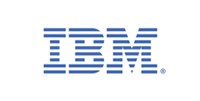
How vulnerable are your applications to security risks and threats? This course will help you identify vulnerabilities and monitor the health of your applications and systems. You’ll examine and implement secure code practices to prevent events like data breaches and leaks, and discover how practices like monitoring and observability can keep systems safe and secure.
Read more
How vulnerable are your applications to security risks and threats? This course will help you identify vulnerabilities and monitor the health of your applications and systems. You’ll examine and implement secure code practices to prevent events like data breaches and leaks, and discover how practices like monitoring and observability can keep systems safe and secure.
How vulnerable are your applications to security risks and threats? This course will help you identify vulnerabilities and monitor the health of your applications and systems. You’ll examine and implement secure code practices to prevent events like data breaches and leaks, and discover how practices like monitoring and observability can keep systems safe and secure.
You will gain extensive knowledge on various practices, concepts, and processes for maintaining a secure environment, including DevSecOps practices that automate security integration across the software development lifecycle (SDLC), Static Application Security Testing (SAST) for identifying security flaws, Dynamic Analysis, and Dynamic Testing. You’ll also learn about creating a Secure Development Environment, both on-premise and in the cloud. You’ll explore the Open Web Application Security Project (OWASP) top application security risks, including broken access controls and SQL injections.
Additionally, you will learn how monitoring, observability, and evaluation ensure secure applications and systems. You’ll discover the essential components of a monitoring system and how application performance monitoring (APM) tools aid in measuring app performance and efficiency. You’ll analyze the Golden Signals of monitoring, explore visualization and logging tools, and learn about the different metrics and alerting systems that help you understand your applications and systems.
Through videos, hands-on labs, peer discussion, and the practice and graded assessments in this course, you will develop and demonstrate your skills and knowledge for creating and maintaining a secure development environment.
What's inside
Syllabus
Introduction to Security for Application Development
In this module, you will identify how security fits into your workflow and gain a working knowledge of security concepts and terminology. You’ll discover how to design for security in the Software Development Lifecycle (SDLC) and find out about a set of practices known as DevSecOps. You will also discover the OSI model, identify the necessary OSI layers for developers, and implement security measures on the four layers of application development. You will gain insights into security patterns and learn how to organize them. You will describe TLS (Transport Layer Security) and SSL (Secure Sockets Layer), identify how to keep TLS secure in the SDLC, and explore OpenSSL and its purpose. You will learn the strategies, best practices, and methodologies for getting security early into your code to protect applications against threats and vulnerabilities. Further, you’ll find out how you can use tools like vulnerability scanners and threat models to mitigate security vulnerabilities. You’ll also get the opportunity to add key terms like authentication, encryption, and integrity to your security vocabulary. Finally, you will also perform hands-on labs to encrypt and decrypt files using OpenSSL and scan a network environment with Nmap.
Read more
Syllabus
Good to know
Save this course
Activities
Read 'Secure Coding: Principles and Practices' by Michael Howard and David LeBlanc
Show steps
Gain a deeper understanding of secure coding principles and practices from an authoritative source.
View
Writing Secure Code
on Amazon
Show steps
Review your knowledge of basic coding fundamentals
Show steps
Review the basics of coding to ensure a strong foundation for this course.
Show steps
-
Review basic data types, variables, and operators.
-
Practice writing simple functions and loops.
Follow online tutorials on secure coding practices
Show steps
Supplement the course material by following guided tutorials on specific secure coding practices.
Browse courses on
Secure Coding Practices
Show steps
-
Find reputable online resources and tutorials.
-
Follow the tutorials step-by-step and implement the practices in your own code.
-
Experiment with different secure coding techniques.
Four other activities
Expand to see all activities and additional details
Show all seven activities
Participate in online discussion forums or study groups focused on application security
Show steps
Engage with peers to discuss and reinforce course concepts, ask questions, and share knowledge.
Show steps
-
Join online communities or forums dedicated to application security.
-
Participate in discussions, ask questions, and share your insights.
Engage in coding exercises and challenges related to application security
Show steps
Test and solidify your understanding of application security concepts through coding exercises and challenges.
Browse courses on
Application Security
Show steps
-
Find online coding platforms or challenges that focus on application security.
-
Attempt to solve the challenges and write secure code.
-
Review your solutions and identify areas for improvement.
Write a blog post or article summarizing a specific topic covered in the course
Show steps
Demonstrate your understanding by creating content that explains a course topic to a broader audience.
Browse courses on
Blogging
Show steps
-
Choose a specific topic from the course material.
-
Research and gather information from reliable sources.
-
Write a well-structured and informative blog post or article.
-
Publish your content online and share it with others.
Create a small application and implement security best practices throughout the development process
Show steps
Apply your knowledge by building a practical project that showcases your understanding of secure application development.
Browse courses on
Application Development
Show steps
-
Plan and design your application, considering security from the outset.
-
Implement secure coding practices throughout the development process.
-
Test and validate your application's security.
-
Deploy and monitor your application, ensuring ongoing security.
Read 'Secure Coding: Principles and Practices' by Michael Howard and David LeBlanc
Show steps
Gain a deeper understanding of secure coding principles and practices from an authoritative source.
View
Writing Secure Code
on Amazon
Show steps
Review your knowledge of basic coding fundamentals
Show steps
Review the basics of coding to ensure a strong foundation for this course.
Show steps
- Review basic data types, variables, and operators.
- Practice writing simple functions and loops.
Follow online tutorials on secure coding practices
Show steps
Supplement the course material by following guided tutorials on specific secure coding practices.
Browse courses on
Secure Coding Practices
Show steps
- Find reputable online resources and tutorials.
- Follow the tutorials step-by-step and implement the practices in your own code.
- Experiment with different secure coding techniques.
Participate in online discussion forums or study groups focused on application security
Show steps
Engage with peers to discuss and reinforce course concepts, ask questions, and share knowledge.
Show steps
- Join online communities or forums dedicated to application security.
- Participate in discussions, ask questions, and share your insights.
Engage in coding exercises and challenges related to application security
Show steps
Test and solidify your understanding of application security concepts through coding exercises and challenges.
Browse courses on
Application Security
Show steps
- Find online coding platforms or challenges that focus on application security.
- Attempt to solve the challenges and write secure code.
- Review your solutions and identify areas for improvement.
Write a blog post or article summarizing a specific topic covered in the course
Show steps
Demonstrate your understanding by creating content that explains a course topic to a broader audience.
Browse courses on
Blogging
Show steps
- Choose a specific topic from the course material.
- Research and gather information from reliable sources.
- Write a well-structured and informative blog post or article.
- Publish your content online and share it with others.
Create a small application and implement security best practices throughout the development process
Show steps
Apply your knowledge by building a practical project that showcases your understanding of secure application development.
Browse courses on
Application Development
Show steps
- Plan and design your application, considering security from the outset.
- Implement secure coding practices throughout the development process.
- Test and validate your application's security.
- Deploy and monitor your application, ensuring ongoing security.
Career center
Application Security Engineer
Software Developer
DevOps Engineer
Information Security Analyst
Security Architect
Penetration Tester
Cloud Security Engineer
Security Consultant
IT Auditor
Security Operations Analyst
Network Security Engineer
Cybersecurity Analyst
Software Tester
Privacy Analyst
Information Systems Security Manager
Reading list
Share
Similar courses
OpenCourser helps millions of learners each year. People visit us to learn workspace skills, ace their exams, and nurture their curiosity.
Our extensive catalog contains over 50,000 courses and twice as many books. Browse by search, by topic, or even by career interests. We'll match you to the right resources quickly.
Find this site helpful? Tell a friend about us.
We're supported by our community of learners. When you purchase or subscribe to courses and programs or purchase books, we may earn a commission from our partners.
Your purchases help us maintain our catalog and keep our servers humming without ads.
Thank you for supporting OpenCourser.



